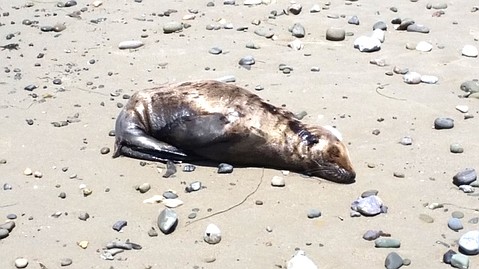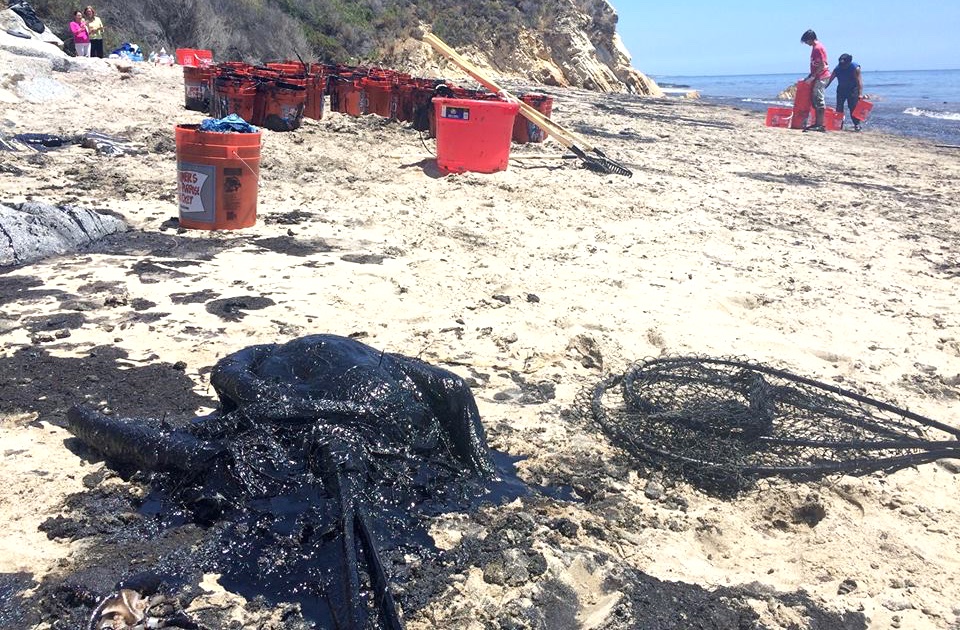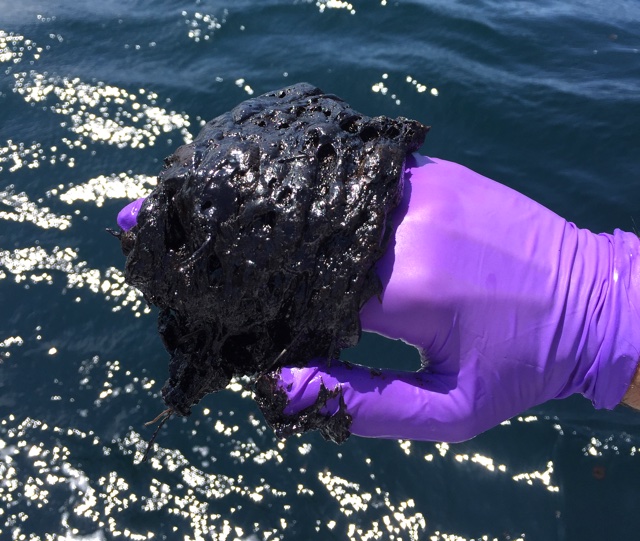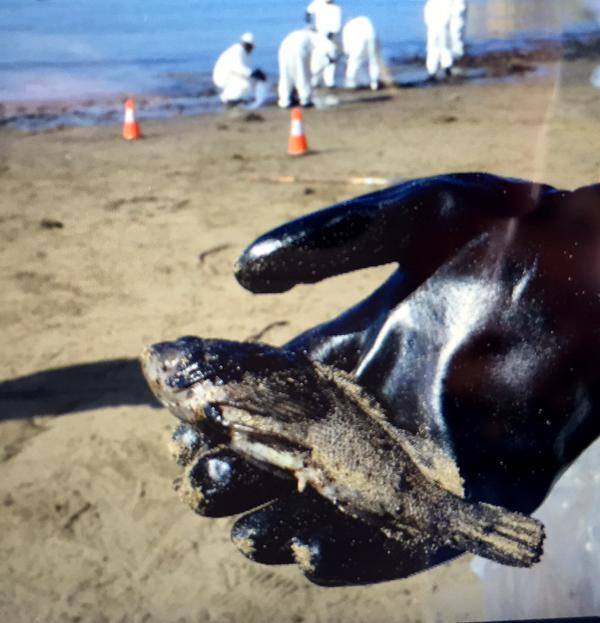
Exactly how many creatures are being killed is hard to say because most of the carnage is happening underwater. Federal and state agencies, now in total control of the affected area, have imposed such exceptionally strict closures that volunteers, reporters, and even local biologists have been denied access.
The FAA flight restrictions now block aircraft and drones from getting within five miles of the Refugio site. El Capitan and Refugio beaches are closed until June 4, nearby fisheries have been shut down indefinitely. "All the secrecy suggests there's a big problem," said Greg Helms with the Ocean Conservancy, an environmental watchdog group. He speculated, as have many conservationists and local officials, that more wildlife may have been killed, or more oil spilled, than authorities are saying.

Five sick sea lions were rescued, but one died in care this weekend. If the fur and skin of big marine animals become coated with the sticky black goo, they're in danger of being unable to regulate their body temperature. Two dead dolphins were found, but with "no visible oil," officials reported. Halpern said such fatalities could have resulted from eating prey that has absorbed the toxic substance. Authorities estimated the number of dead invertebrates at "more than 50." That's likely laughably low, other researchers have said.
The widely acknowledged and strikingly slow clean up operation was intended to keep the crude from hitting touristy locales ahead of the holiday weekend. But many marine biologists and conservationists have argued that it is just as — if not more — important to focus on the subsurface effects. "There's a tendency to protect the visible aspects of the environment," Helms said, "but you have to remember there are extremely important fisheries and resources below the surface."
The undeveloped Gaviota Coast, called "the Galapagos of North America," is one of only five places on the planet where northern and southern plants and wildlife meet. Santa Barbara conservationists and fishermen alike watch in dismay, as for miles around, oil swirls in the currents, seeps into the crannies of reefs, and settles on kelp fronds. The crude is clouding normally clear waters, blocking sea grass from needed sunlight, and glomming onto the shells and skin of critters scuttling along the sea floor. It's working its way through the membranes of plankton that nourish all manner of life, from tide pool filter feeders to endangered blue whales migrating through the Santa Barbara Channel.
Little can be done to collect oil that's sunk into the water column, Helms said, but recognizing the problem can help inform restoration efforts, such as transplanting kelp, eel grass, and surf grass in areas where they've been inevitably killed off. One critical staple of the Gaviota Coast, its vast kelp forests, provide a 3D hunting ground for otters and sea lions bobbing and weaving for fish and other food. When the plants go, so do the animals.
But exactly how oil mixes with intertidal zones and bigger stretches of ocean is still somewhat a mystery. UCSB earth science professor David Valentine said this spill, which was right along the coastline rather than in open water, was particularly dangerous. The oil, instantly churned by the waves, "smothered everything" in its path. Once the crude mixes with sand, it becomes denser than seawater and sinks to the sea floor. There, it cartwheels along with the currents, settling in low spots. Valentine and his team have already discovered deposits in nearby reefs.

This spilled oil is particularly heavy and sticky compared to other types of crude, which can make surface cleanings easier during the first hours of a response. But now that the slicks have spread throughout the Santa Barbara Channel, "clean up doesn't make that much of a difference," Valentine said. And where the oil will end up is anyone's guess.
What we do know is that as the miles-long oil sheen fades from the surface of the ocean and from national media attention, and as visible globs of tar are slowly stripped from rock and sand, the crude's insidious effects on Gaviota Coast's delicate food web will linger for many years to come.




Reader Comments
to our Newsletter